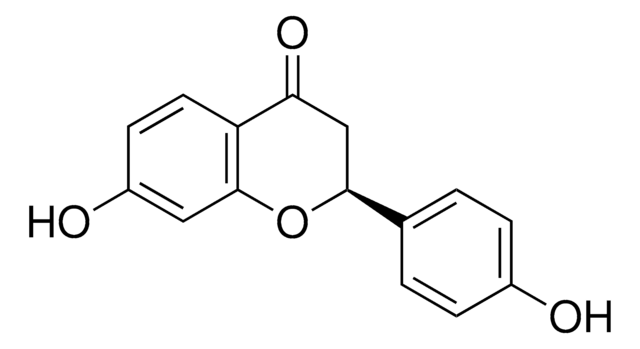Kluczowe dokumenty
B178
Butein
solid
Synonim(y):
1-(2,4-Dihydroxyphenyl)-3-(3,4-dihydroxyphenyl)-2-propen-1-one, 2′,3,4,4′-Tetrahydroxychalcone
About This Item
Polecane produkty
Postać
solid
kolor
yellow
rozpuszczalność
DMSO: >50 mg/mL
H2O: insoluble
ciąg SMILES
OC1=CC(O)=C(C(/C=C/C2=CC(O)=C(O)C=C2)=O)C=C1
InChI
1S/C15H12O5/c16-10-3-4-11(14(19)8-10)12(17)5-1-9-2-6-13(18)15(20)7-9/h1-8,16,18-20H/b5-1+
Klucz InChI
AYMYWHCQALZEGT-ORCRQEGFSA-N
informacje o genach
rat ... Alox5(25290)
Szukasz podobnych produktów? Odwiedź Przewodnik dotyczący porównywania produktów
Opis ogólny
Działania biochem./fizjol.
Cechy i korzyści
Przestroga
Kod klasy składowania
13 - Non Combustible Solids
Klasa zagrożenia wodnego (WGK)
WGK 3
Temperatura zapłonu (°F)
Not applicable
Temperatura zapłonu (°C)
Not applicable
Środki ochrony indywidualnej
Eyeshields, Gloves, type N95 (US)
Certyfikaty analizy (CoA)
Poszukaj Certyfikaty analizy (CoA), wpisując numer partii/serii produktów. Numery serii i partii można znaleźć na etykiecie produktu po słowach „seria” lub „partia”.
Masz już ten produkt?
Dokumenty związane z niedawno zakupionymi produktami zostały zamieszczone w Bibliotece dokumentów.
Produkty
Epigenetic modifications are thought to occur through two key interconnected processes—DNA methylation and the covalent modification of histones.
Nasz zespół naukowców ma doświadczenie we wszystkich obszarach badań, w tym w naukach przyrodniczych, materiałoznawstwie, syntezie chemicznej, chromatografii, analityce i wielu innych dziedzinach.
Skontaktuj się z zespołem ds. pomocy technicznej